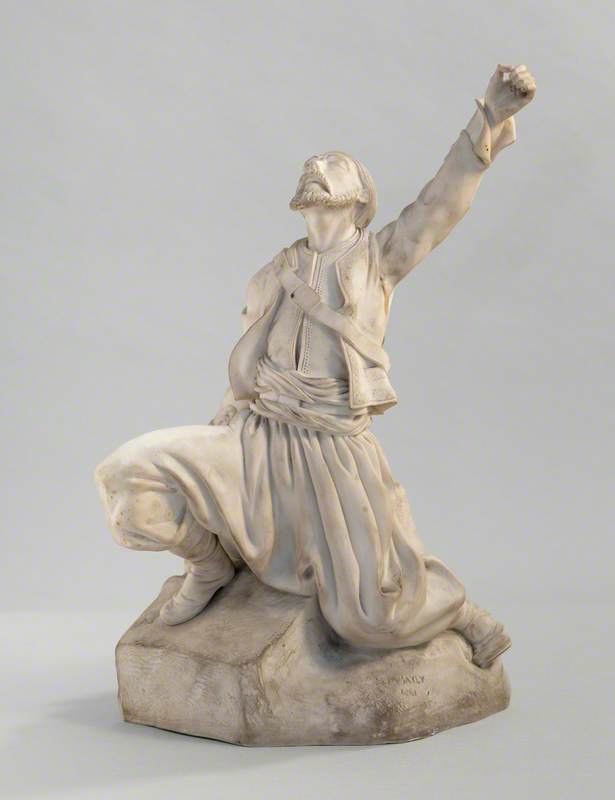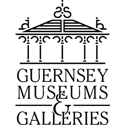
Variously a banker’s clerk, sculptor and dealer in statuary, boarding-house keeper, printing-machinery inventor and hotelier, Bayly was born on 6th November 1830 at 46 Great Portland Street, Marylebone, London. His father was Philip Edward Bayly (1783–1855) whose family had moved from Yorkshire to Ireland in the mid-17th century. His Irish mother was Jane Bready, originally from either Co. Dublin or Co. Wicklow, and they married in Dublin in 1826. She may have been his second wife since he appears to have had a daughter called Louisa, born about 1814. Philip Bayly was a clothing merchant with premises at 117 Grafton Street, Dublin, until the firm closed in 1847/1848, although he had by then long since moved to London. From at least 1832 to 1848, the family lived at 76 Norton Street, Fitzroy Square, but left there before Jane Bayly died on 18th September 1849.
By 1857 Adolphus had moved to Norwood, Surrey, and was noted as a ‘Banker’s Clerk’ when he married Emily Sophia Reeve (d.1910), daughter of a Pimlico dairyman, at St Peter’s, Pimlico, on 10th April that year. The couple also do not appear in the 1861 census but that of 1871 shows them as husband-and-wife boarding-house keepers at Belle Vue Mansions, 41 King’s Road, Brighton.
They had lived in Brighton since about 1862 when Bayly was listed as a sculptor at 2 Bedford Place, but were at Belle Vue Mansions before 1868, since this is the address from which his sole sculptural exhibit, The death of Marmion (presumably from Scott) appeared at the Royal Academy in that year. In 1864, at the Prince of Wales’s Gallery in Regent Street, the music publishers Wood & Cramer had also displayed his ‘beautifully executed bust’ of the melodramatist and librettist Edward Fitzball (1792–1873), who had worked for them for many years (The Era, 25th September 1864).
‘M. Bayly’ is how he appears in the RA catalogue and it was as Mansel Bayly that on 1st February 1872 his mechanical talents became evident, when he took out a patent (1872, no. 319) for a ‘New or Improved Combined Machine for Printing with or without Self-Inking Apparatus, Perforating, Stamping, Copying and Embossing’. It is not apparent whether it was solely a paper design or if he had built a prototype, or if the matter got further. The 1874 Brighton Post Office directory again lists him as a sculptor and only his wife as a boarding-house keeper, still at 41 King’s Road (also the address for his patent application). They had eight children, four boys and four girls, of whom only one boy died young. The eldest child (Harry, later a yacht broker) was born in London in 1858, then a daughter (Ella) in Hammersmith in about 1859: the others, from 1862 to 1877/8 were all born in Brighton.
Bayly subsequently became a licensed victualler and landlord of the Swan Hotel in Pulborough, West Sussex. He is noted there as ‘Mansell Bayly’ in the 1881 census but his wife and family were living separately at 1 West Street, Horsham, 13 miles away. She was noted there as ‘Hotel keeper’s wife’ with six servants also in the house, including two nurses, an ostler and a barmaid, which suggests she may have been partly running it as lodgings. As became clear in an 1883 inquest report (West Sussex County Times, 21st April), Bayly had by then become depressed and worried about money and was using chloral to help him sleep. On Friday 13th April he locked himself in his room at the ‘Swan’, took a deliberate overdose and – though discovered and medically helped on the Saturday – died on Sunday 15th. A coroner’s verdict of suicide while temporarily insane was recorded. His widow had returned to Pulborough when granted the probate on his estate (£797 15s 11d) in May 1883, so perhaps took over running the ‘Swan’.
The few (small-scale) pieces of Bayly’s sculpture so far seen show professional skill but how he trained and how much he did is unknown. The only hint so far is in the ‘Bazaar’ section of Exchange and Mart for 4th October 1871 (p.365) where he placed two sale adverts for statues including a life-size Fighting Gladiator as a conservatory piece (£10), The Dancing Faun and other subjects and busts, along with brackets, drawing models and sculptors’ equipment. The entry includes small ‘groups’ still paper-wrapped as received which suggests his stock was not all his own work. How much was his is not clear: the Gladiator, Faun and others were probably copies (or casts) after well-known classical pieces. The sole example on Art UK is a dynamic half-kneeling man – possibly a Zouave soldier from the dress – in biscuit porcelain (Parian ware). This suggests he may have been more a sculptural modeller than a carver. Apart from his single RA appearance the only other public exhibition in which he has been noted was the second autumn paintings show at the Royal Pavilion, Brighton, in 1875. It included three unnamed pieces of sculpture and since he appears as ‘Mansel Bayly’ in a list of the artists involved, one or more seem to have been his (London Evening Standard, 11th September).
Summarised from Art UK’s Art Detective discussion ‘What more could we establish about the sculptor A.E.M. Bayly and the subject of this sculpture?’
Text source: Art Detective
